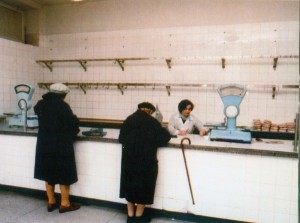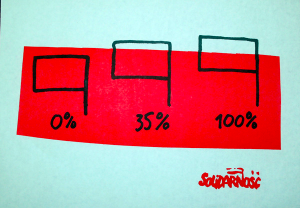Mar 06 2014
Lanterns and Parties
In his account of the events of 1989, Timothy Garton Ash explains his role as a historian who was observing historic happenings, had some appreciation for the magnitude of the situation, and realized that his privileged access to chief players and organizations put him in a unique position to take advantage of a perfect storm of sorts. His narrative is appropriately discerning to acknowledge that future readers will have information that he does not, and that a major contribution from his perspective is the mood of the participants and the spirit of the moment, because that is something that fades inevitably as time marches on, which always seems to happen.
Ash goes through a geographic progression, as have others in our previous readings, starting in Poland with his speech to miners before the June elections, and providing clarifications about candidates to new voters at the polls (p.28). His straddling of the line between observation and political incitement is not lost on him (p. 12), and this self awareness informs the rest of the book. He moves then from Budapest at the time of the reburial of Imre Nagy, and next to the German Democratic Republic. His treatment of the German case contains sketches of the scene of Ossies wandering into the newly open Berlin, and using the gift of 100 Deutschmarks in “Greeting Money” from the other Germany, to explore the other part of their city (p. 62). His descriptions of the street view, and the frenzied considerations of what reform might make of a new East Germany alludes to an uncertain future, and the complex transition we now know came during German unification.
The author then moves to Prague, where he has the most access, and details his intimate access to The Civic Forum and the hero Václav Havel. His proximity makes for a more realistic and balanced portrayal of Havel, as the charismatic figure in a more democratic movement than Lech Wałęsa, but a leader nonetheless. The broad movement of students, suddenly active workplace councils, and artists were a collection of voices, and Havel, as much as he wanted to be a writer and not a politician (p. 103), successfully found a way to genuinely give one voice to Prague.
He concludes with some explanation the realignments that accompany the transition of Eastern Europe, with a capital E for Eastern (p. 131), and the return of the region to more specific distinctions of location (east central, south-eastern, eastern). There is also reflection on the essential elements of the collapse, “which might be labelled as ‘Gorbachev’ ‘Helsinki’ and ‘Tocqueville (p. 140).’ ” A further revisitation from ten years later offers new insights about the significance of 1989, with 1789 used as a point of comparison, and how this period hastened the collapse of the Soviet Union.
His sources seem to consist of his personal interactions and his contemporary attention to the news media. Some interesting anecdotes – such as his creation of the 10 years, 10 months, 10 days trope – provide colorful additions to his already vivid record.
Garton Ash, Timothy. The Magic Lantern: The Revolution of ’89 Witnessed in Warsaw, Budapest, Berlin, and Prague. 1st Vintage books ed. New York: Vintage Books, 1993.
____________________________________________________
Rudolf Battek was among the notable dissidents who had been a Party member, and in 1968 founded the Club of Committed Non-Party Members (KAN) after his exit from his position in the ruling order. Another party expelled him in 1990, the Czech Social Democratic Party (ČSSD) after he had been a member of the Civic Forum and A Chartist. His was a winding path through Czech party politics. He also joined the Association of Social Democrats, and sociologist Jirina Siklova called him “the only [genuine] social democrat in [his] country.” His career brought him 10 years of prison time during normalization, but also brought him to acquaintance with heavyweights of European social democratic politics like Chancellor Willy Brandt (Germany) and Prime Minister Olaf Palme (Sweden). He passed away at age 88 on March 17, 2013.
“Former dissident, post-1989 politician Battěk dies,” http://www.ceskenoviny.cz/zpravy/former-czech-dissident-post-1989-politician-battek-dies-aged-88/915045 (Accesed: March 6, 2014)
“Former dissident, post-1989 politician Battěk dies,” Czech News Agency (ČTK), March 2014. Prague Daily Monitor, March 17, 2014, http://praguemonitor.com/2013/03/18/former-dissident-post-1989-politician-batt%C4%9Bk-dies-aged-88 (Accesed March 18, 2014, 9:45 AM)


